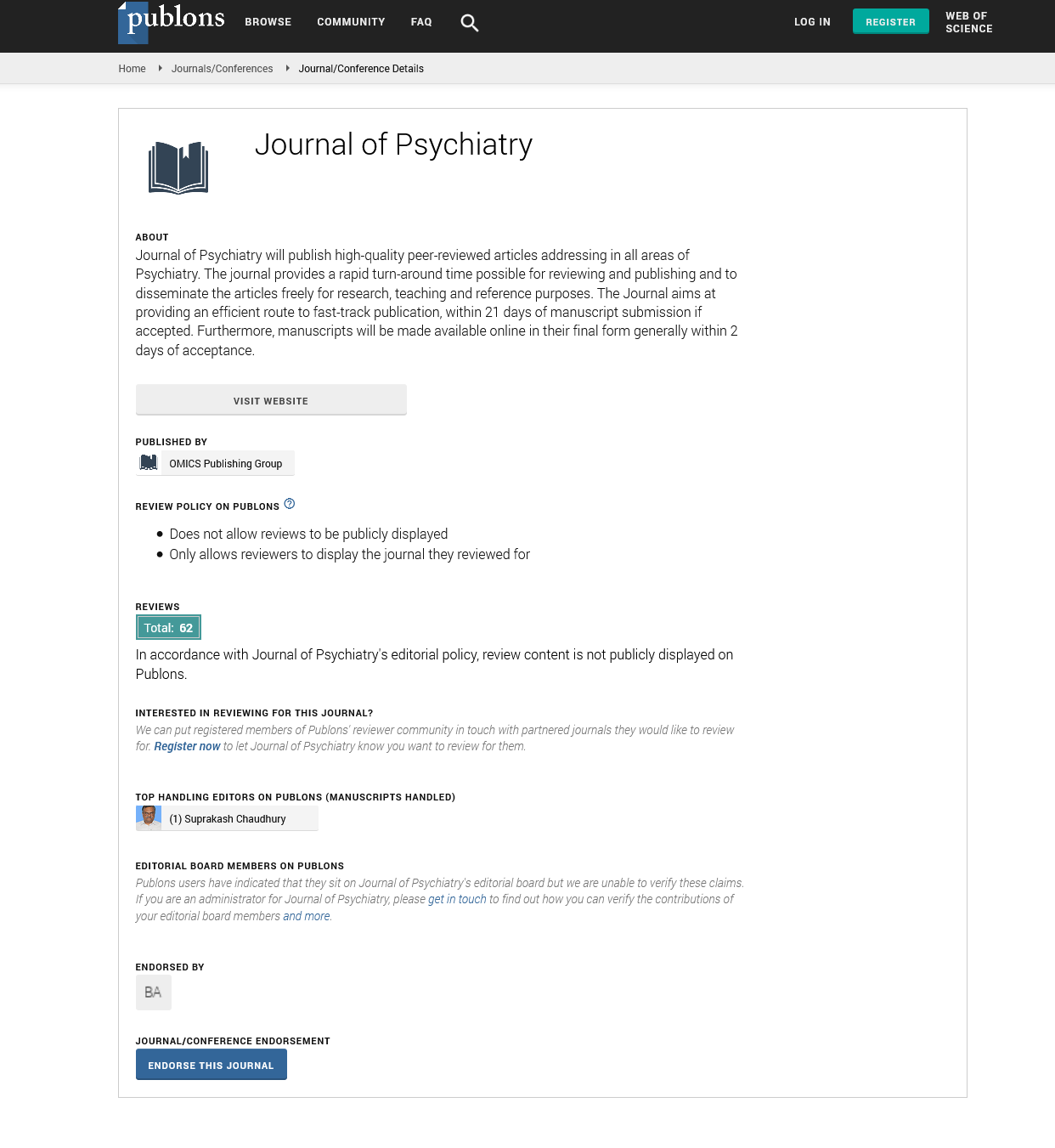Indexed In
- RefSeek
- Hamdard University
- EBSCO A-Z
- OCLC- WorldCat
- SWB online catalog
- Publons
- International committee of medical journals editors (ICMJE)
- Geneva Foundation for Medical Education and Research
Useful Links
Share This Page
Open Access Journals
- Agri and Aquaculture
- Biochemistry
- Bioinformatics & Systems Biology
- Business & Management
- Chemistry
- Clinical Sciences
- Engineering
- Food & Nutrition
- General Science
- Genetics & Molecular Biology
- Immunology & Microbiology
- Medical Sciences
- Neuroscience & Psychology
- Nursing & Health Care
- Pharmaceutical Sciences
Abstract
Evolutionary Perspective on Microglial/Neuronal Coupling with Special Relevance to Psychiatric Illnesses
George B Stefano and Richard M Kream
Microglia have selectively evolved as a morphologically and chemically distinct class of immuno-competent CNS resident cells with potent bidirectional signaling capabilities linked to induction of a macrophage-like phenotype following metabolic, microbiological, or viral insults. It has been empirically determined that a conserved set of shared chemical messengers connects a communication network mediating reciprocal exchange of regulatory information between immune, central nervous, and neuroendocrine systems. From an evolutionary perspective, the pluripotent neuro-protective capabilities of invertebrate microglia have been extended and amplified in classes of mammalian microglia. The state-dependent plasticity of microglia has provoked considerable empirical investigation into their functional/regulatory roles in mediating innate immune surveillance and neural protection within the CNS. Upon pathophysiological dysregulation, aberrant microglial activities may provide significant contributory factors in the etiology and persistence of major neurological, degenerative, and psychiatric disorders. Within this context, invertebrate microglia appear to represent highly appropriate model systems to investigate underlying cellular and molecular mechanisms involved in higher order neuroimmune regulation of multiple CNS activities by mammalian microglia

